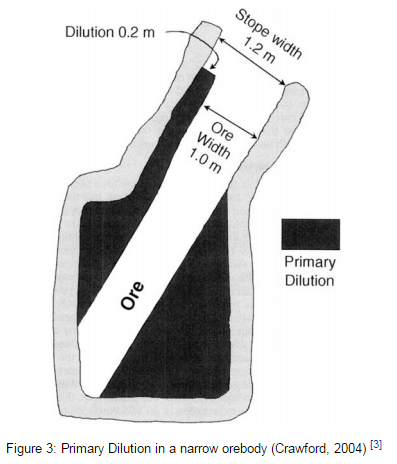Ore Dilution & Recovery in Mining

Recovery and dilution usually are interrelated; with some methods of stoping a high recovery involves contamination of the ore from the walls or capping, and often clean ore can be obtained only by leaving some ore in the mine. In open-stope mines the greatest loss of ore is that tied up in pillars left for […]
Compare Stoping Methods of Mining

The foregoing descriptions and discussion of the different stoping methods and practices and the accompanying tabulated data indicate the conditions under which they may be applied and serve as a basis for comparing them. Stoping costs will be presented later. Direct comparisons of the different methods are difficult because these methods and variations thereof are […]
Costs of Mining Methods
To compare properly two different methods of mining, it is not wise to attempt to calculate the total cost of each, but rather to compare the costs of those operations that are differently executed in the two methods under consideration. When any method is in operation the proper way to reduce the total cost is […]
Backfilling Mining Stopes
Stope filling has been discussed by Jackson in an earlier paper. Filling long has been recognized as the most effective method of permanently supporting the walls of mine workings and minimizing movement and subsidence. It is used alone in cut-and-fill stoping and in conjunction with framed timbers in square-set stoping for support of weak walls […]
Drilling & Blasting of Underground Stopes
Drilling in stopes is done with pneumatic-feed stopers, light handheld hammer drills of the jackhammer type and heavier plugger machines, drifters of the Leyner type mounted on crossbars or on columns, and drifters (and, now, only occasionally, piston drills) mounted on tripods; more recently, with the more extensive use of bort instead of carbon for […]
Timbering Mining Stopes
Timbering in stopes ranges from occasional light props or stubs to temporarily support patches of unsafe ground to regular timbering with square sets and large bulkheads or “cribs” of solid timbers. Regular stull timbering has been mentioned. Figure 94 shows this type of timbering in a narrow, steep-dipping vein. Figure 116 shows regular stub timbering […]
Underground Stoping Practice & Methods
The general conditions to which each of the principal stoping methods is applicable have been stated briefly in the preceding pages. Variations of the principal methods, differences in methods of drilling and blasting, handling ore and waste in the stopes, transferring broken ore from the stopes to the haulageways, and filling and timbering operations, and […]
Stoping Mining Methods
The subject of stoping has been discussed at considerable length by Jackson and Gardner in a Bureau of Mines bulletin. Data in this bulletin were compiled principally from those presented in reports, dealing with methods and costs at about 75 individual mines, previously published in information circulars. The principal mining methods have been summarized in […]
Ore Hoisting Methods
Shaft Stations, Storage, and Loading Pockets Arrangements for handling ore and waste at the shaft will depend on the method of hoisting (whether in buckets, in cars on cages, or in skips); the tonnage and physical characteristics of the ore; whether two or more classes of ore must be hoisted and kept separate; the method […]
Waste & Ore Pass Design @ Underground Transfer Points
Ore passes are simply vertical or inclined openings for transfer of broken ore to the haulage system. They may be raises in the ore or in the walls of the deposit or timbered openings through filled stopes and, as previously stated, usually terminate at the bottom in some form of loading chute. They must be […]
